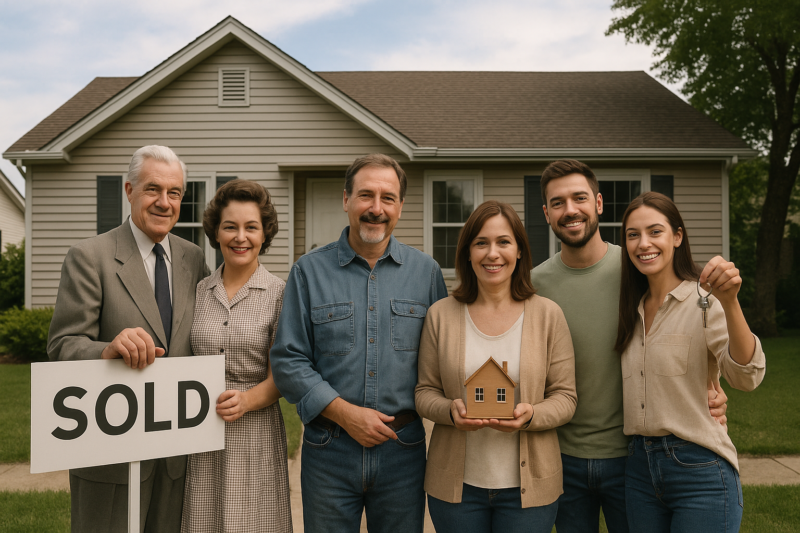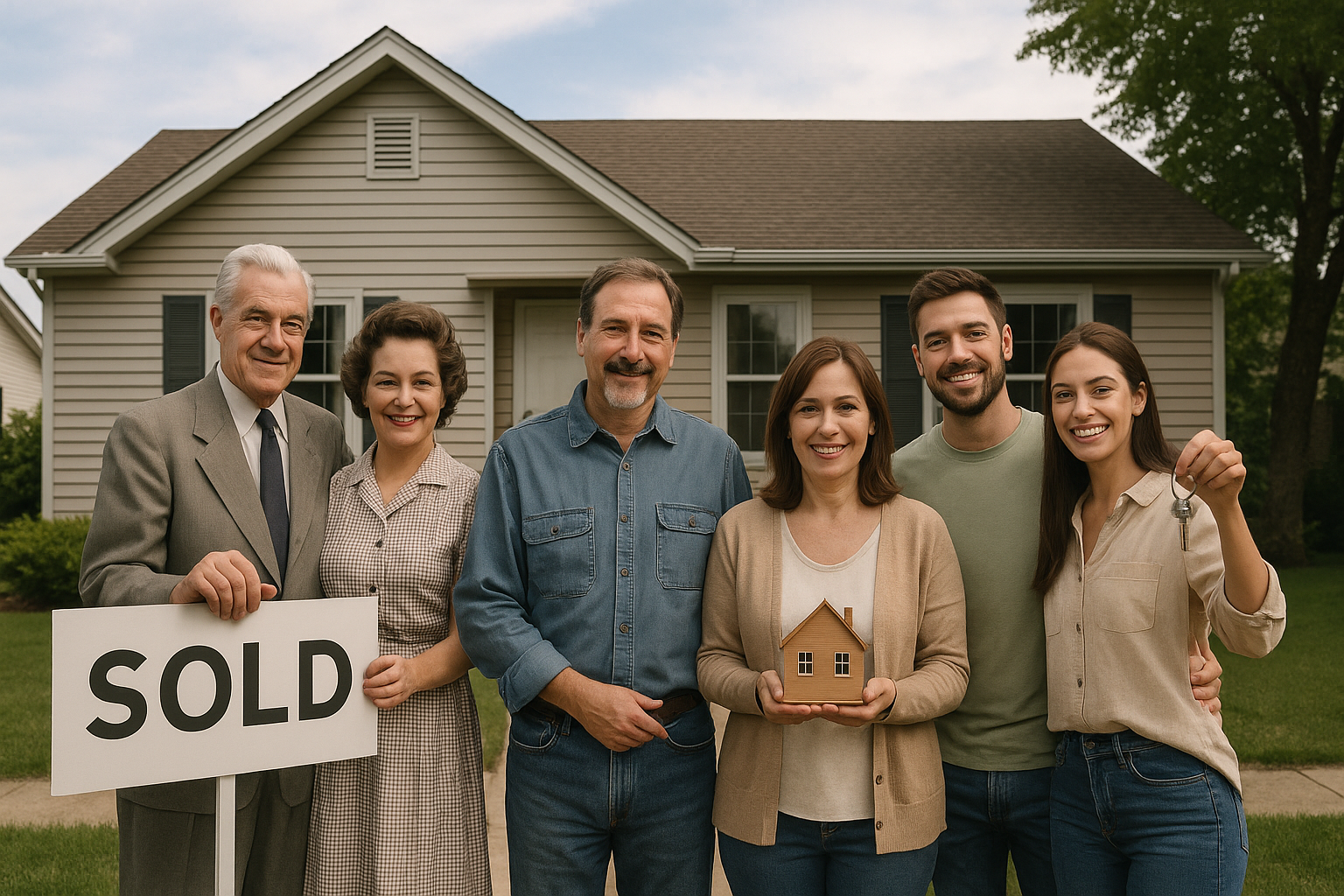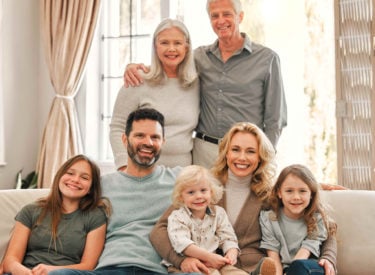
Key takeaways
Homeownership peaked in 1966 at 73%, but has since slipped to 63% by the 2021 Census.
While the national drop looks modest, the generational breakdown tells a far sharper story.
With ownership declining, demand for rental accommodation will only rise.
Property investors aren’t the villains—they’re filling a gap government can’t afford to cover.
Without private investors, governments would need to massively increase taxes to fund the housing stock renters require.
In 1966, homeownership in Australia hit “peak home ownership” as 73 per cent of dwellings were owned outright or with a mortgage.
That figure has been drifting downward ever since, sitting at 66–67 per cent in recent years, and just 63 per cent at the 2021 Census if you count occupied dwellings only.
On the surface, the change might seem modest - a drop of around 10 percentage points over six decades - but the generational breakdown reveals a more dramatic story.

Generations tell the real story
The significant shift is in the timing of when Australians are buying homes.
- 25–29-year-olds: Homeownership fell from 50 per cent in 1971 to 36 per cent in 2021.
- 30–34-year-olds: From 64 per cent to 50 per cent over the same period.
- Even 50–54-year-olds saw a decline from 80 per cent in 1996 to 72 per cent in 2021.
This means younger Australians are getting on the property ladder later, if at all, while older Australians hold onto homes for longer.
Successive cohorts since the Baby Boomers have recorded progressively lower ownership rates.
Why the shift? The usual suspects, and some new ones
- Affordability squeeze
Median house prices are now nearly 8 times the average income, up from around 4 times in the 1980s. Wages growth has been sluggish while property prices, especially in our capital cities, have surged over that time. - Changing life patterns
Marriage, children, and long-term job stability now occur later in life, delaying home purchase decisions. More Australians live alone, which increases per-capita housing demand . - Policy environment
Post-war decades featured pro-ownership policies including public housing sell-offs, war service loans, and generous tax settings. Today’s system still offers incentives to first-home buyers incentives but they are competing in a tighter, more expensive market.
The Bank of Mum and Dad and the Great Wealth Transfer
Enter one of the most significant forces shaping tomorrow’s ownership landscape: the Bank of Mum and Dad (BoMaD).
- Around 60 per cent of first-home buyers now receive financial help from family, most often for deposits.
- BoMaD is Australia’s ninth-largest mortgage lender if ranked alongside banks.
- Productivity Commission data suggests inheritances and giftsvalued at $120 billion in 2018—could quadruple by 2050.
As Baby Boomers pass on property and financial assets, the “great intergenerational wealth transfer” will be both an opportunity and a challenge.
It could help some younger Australians enter the market, but it will almost certainly widen inequality between those with property-owning parents and those without.
Interventions - do they work?
Federal and state governments are well aware of declining ownership rates and have rolled out numerous schemes to help first-home buyers.
- Home Guarantee Scheme (HGS): Allows deposits as low as 5 per cent (2 per cent for single parents) without paying Lenders Mortgage Insurance.
- Help to Buy (Shared Equity): Government takes up to a 40 per cent equity stake in new homes, reducing upfront costs.
- State grants and stamp duty concessions: From $10,000 grants in NSW to $30,000 in QLD, plus exemptions or discounts for eligible buyers.
These policies certainly help some people buy sooner, but in my mind, all they are doing is inflating demand in price brackets that meet the grant criteria, pushing up prices for the very buyers they aim to help, as well as future buyers down the line.
What lies ahead
Three converging forces will shape the future of homeownership in Australia:
- Demographic change – As Boomers age and estates transfer, ownership rates could lift for those who inherit property or cash.
- Wealth inequality – Those without access to BoMaD or inheritance may find ownership slipping even further out of reach.
- Policy direction – Government incentives will need to be paired with meaningful supply-side reforms to avoid simply shifting prices upward.
Forecasts suggest the national ownership rate could slip to 63 per cent by 2040, with under-55s possibly falling below 50 per cent.
Without reform, we could face not just a housing crisis, but a retirement poverty crisis for future renters.
Final word
Australia’s homeownership story has moved from a universal expectation to a mixed reality - part aspiration, part privilege.
Whether the coming decades reverse that trend or entrench it will depend on how we manage wealth transfers, design housing policy, and address affordability head-on.
However, what I do see is the ongoing need for property investors to provide rental accommodation for the larger cohort of Australians who will be renting for longer (or even all their lives).
While some argue that this is taking advantage of those who can't afford to buy a home, I view it differently.
Property investors are providing a service.
They are then providing accommodation that, in other countries, the government would typically provide.
If the Australian government had to provide this rental accommodation, it would have to find the money somewhere, and we know that it is currently short of funds.
So if the government was to take the role that property investors currently provide, it would have to raise significantly more taxes from those who are complaining about property investors' tax incentives.














